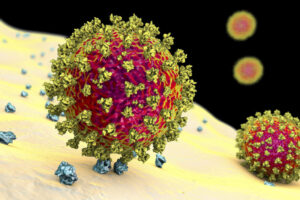Immune System Vocabulary
Note – This vocabulary page is work in progress. Currently, as we add more blog posts and reference journal article reviews. We will update this page. We will have links to posts and articles with better explanations and references. It is difficult to read journal articles due to the terms used. Immunology vocabulary is very complex.
A
Asymptomatic – Used to denote infections that never make people feel sick. #asymptomatic
B
Bivalent Vaccine – A bivalent vaccine elicits an immune response against two different antigens. This can means two different viruses, or two variations of one virus. or two bacteria.
Breakthroughs – The term breakthrough has an established history in vaccinology—counting up these events is necessary to know how well inoculations are working in and out of trials.
C
Covalent Vaccine – The same as Bivalent except the two target antigens are in equal parts.
E
Evidence-based medicine – Medical practice or care that emphasizes the practical application of the findings of the best available current research.
F
Fully vaccinated – To reduce the risk of getting infected or seriously sick with a disease, and decrease the chances that the virus will be passed on to others. Often vaccine effective rates are given as a percentage such as 95% effective. Therefore this mean you have a 5% chance of getting the disease. This term is often misunderstood. It takes your body several weeks to become disease resistant after vaccination.
I
IgE – Immunoglobulin E (IgE) is an antibody. It is a protein produced by the immune system in response to a possible invader. It is primarily involved in the allergic response but also fights infections from bacteria, viruses and parasites.
L
LINet is a system that monitors visits for respiratory illness run by the US CDC.
M
Multivalent Vaccine – Vaccines have been designed to protect against even more than two types of viruses
N
Natural immunity – Describes the protection left behind after an infection by a bonafide pathogen.
O
Orthologue – A homologous gene that is related to those in different organisms by descent from the DNA of a common ancestor.
P
Polyclonal response – Polyclonal B cell immune response exhibited by the adaptive natural mode immune system of mammals. It ensures that a single antigen is recognized. The B cell immune response attacks through its overlapping parts, called epitopes, by multiple clones of B cells.
Q
Quarantine – from Italian meaning 40 days.
S
Subvariant – One of two or more distinctive forms or types of the same variant.
T
T cell receptor (TCR) – The T-cell receptor (TCR) is a protein complex. Accordingly, TCR’s are on the surface of T cells and T lymphocytes. These cells are responsible for recognizing fragments of antigen as peptides. They then bond to major histocompatibility complex (MHC) molecules. Thus, the binding between TCR and antigen peptides helps degenerate the antigen. Many TCRs recognize the same antigen peptides.
The TCR has two different protein chains (that is, it is a heterodimer). In humans, in 95% of T cells the TCR consists of an alpha (α) chain and a beta (β) chain (encoded by TRA and TRB, respectively), whereas in 5% of T cells the TCR consists of gamma and delta (γ/δ) chains (encoded by TRG and TRD, respectively). This ratio changes during ontogeny and in diseased states (such as leukemia). It also differs between species. As an illustration, genetic research mapped the orthologues of various species loci TCR’s. Each locus can produce a variety of polypeptides with constant and variable regions.
V
Vaccine effectiveness – A measure of vaccine effectiveness often given as a percentage based on clinical trials.
Vaccine-acquired immunity – Immunity via a vaccine such as Polio vaccine. this takes place in the days and weeks following a vaccination where the bodies immune system developed antigens to inactivate a pathogen.
Vaccinology – A field recently that has come into existence. An expertise related to the creation and deployment of vaccines. The field ‘borrows’ from epidemiology, immunology, infectious disease, pediatrics, preventive medicine, public health and virology.
Variant – one of two or more viruses or bacteria of the same kind that differ in some way from one another.
Virus – A virus is a submicroscopic infectious agent that replicates only inside the living cells of an organism. Viruses infect all life forms, from animals and plants to microorganisms, including bacteria and archaea.

Covid-19 coronavirus binding to human cell, conceptual computer illustration.